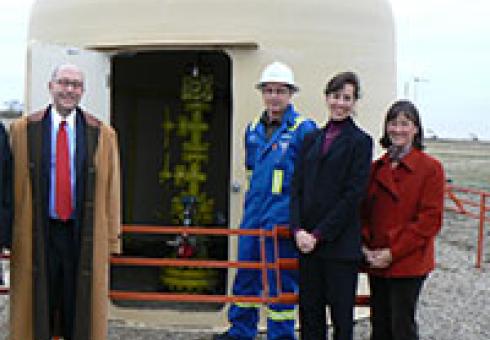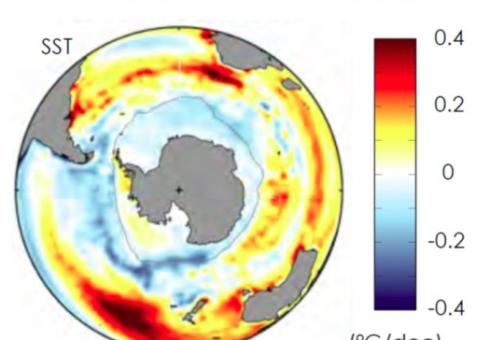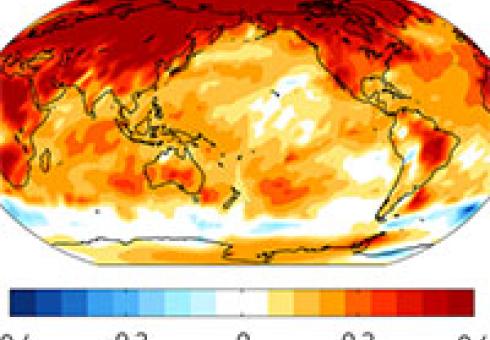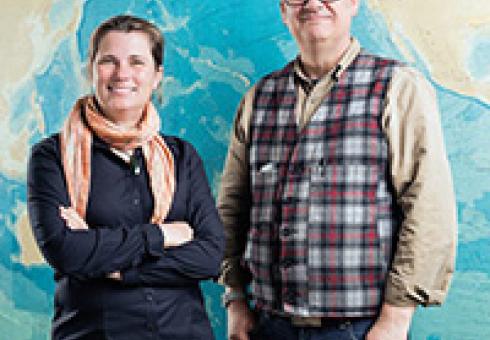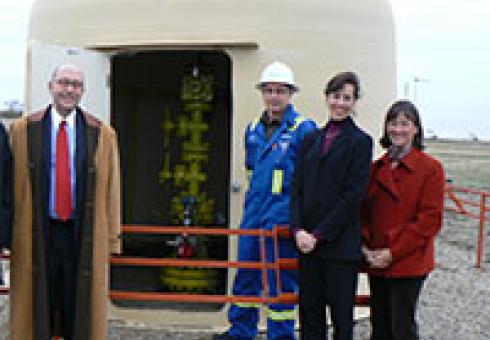CS3 In the News
A new study in Journal of Climate shows that burning coal could result in less rainfall and raise water stress in some countries - especially in developing Asia.
The warming effects of burning coal are well known, and studies have shown that using the dirtiest fossil fuel around can cause cooling, too. This is not good news, though. A new study, by Singapore scientists, shows that the cooling could result in less rainfall and raise water stress in some countries - especially in developing Asia - where the use of coal looks set to rise.
Joint Program Research Associate Howard Herzog makes the case for carbon capture and sequestration
To adequately address climate change concerns, we will need to radically alter our energy systems to eliminate practically all carbon dioxide emissions. In analyzing the different technology options, the important measure of comparison is how much emissions reductions can be achieved and at what price. Unfortunately, the debate usually moves from objective analysis to emotional arguments that can obscure the facts and stall progress toward the ultimate goal of eliminating carbon dioxide emissions. The truth is that all energy technologies have strengths and weaknesses. We need to build on their strengths and to minimize their weaknesses.
Scientists at MIT and elsewhere have identified the “first fingerprints of healing” of the Antarctic ozone layer, published today in the journal Science.
Around the world, scientists are observing evidence of climate change — record high temperatures, rising sea levels, and melting ice sheets. But new research from MIT’s Program in Atmospheres, Oceans and Climate indicates that Antarctica and the Southern Ocean may be experiencing a period of cooling before warming takes over — and the culprit might be the ozone hole rather than greenhouse gases.
MIT Earth, Atmospheric and Planetary Sciences Professor Kerry Emanuel comments on the potential climate change implications of the anticipated opening of the Tennessee Valley Authority’s Watts Bar reactor, which is expected to generate enough electricity to power 650,000 homes.
New research may explain why sea temperatures around Antarctica haven’t risen as much as surface temperatures around the globe
Around the globe, ocean surface temperatures have been rising due to global warming, but the seas around Antarctica haven’t changed much. Now, researchers may have discovered why.
MIT researchers demonstrate new approach to designing location-specific emissions-control measures
Indian Prime Minister Narendra Modi expressed support for the enactment of the Paris climate agreement this year in a meeting Tuesday at the White House. Support for the agreement falls short of a commitment to ratify that U.S. President Barack Obama had been hoping for.
Climate scientists disagree on the impact of the Atlantic Multidecadal Oscillation—a 25-to-40-year cycle of cooling and warming of the Atlantic Ocean—on the frequency of hurricanes. Some expect the AMO to drive cooler sea surface temperatures and fewer hurricanes in coming decades, but others do not think the AMO works this way. EAPS Professor Kerry Emanuel, who is affiliated with the MIT Joint Program, believes that another factor—air pollution—has played a significant role in reducing hurricane activity.
Modeling the diverse world of phytoplankton opens up a predictive view of our own
Joint Program faculty model health benefits, economic costs of energy and climate policies
Research from MIT's Institute for Data, Systems, and Society uses data and models to better design and predict the outcomes of technologies and policies in the critical area of energy and environmental sustainability.
Joint Program Research Associate Howard Herzog on the future of carbon capture and sequestration
On the path to a low-carbon economy, most experts agree that a variety of strategies will be needed, from the dramatic expansion of wind and solar power to electrification or better biofuels for cars and planes. Some technologies remain more controversial than others, however. Carbon capture and storage — the idea of trapping carbon dioxide emissions from power plants and other industrial sources before they are released into the atmosphere and then storing them, usually underground — is one such widely debated approach.


